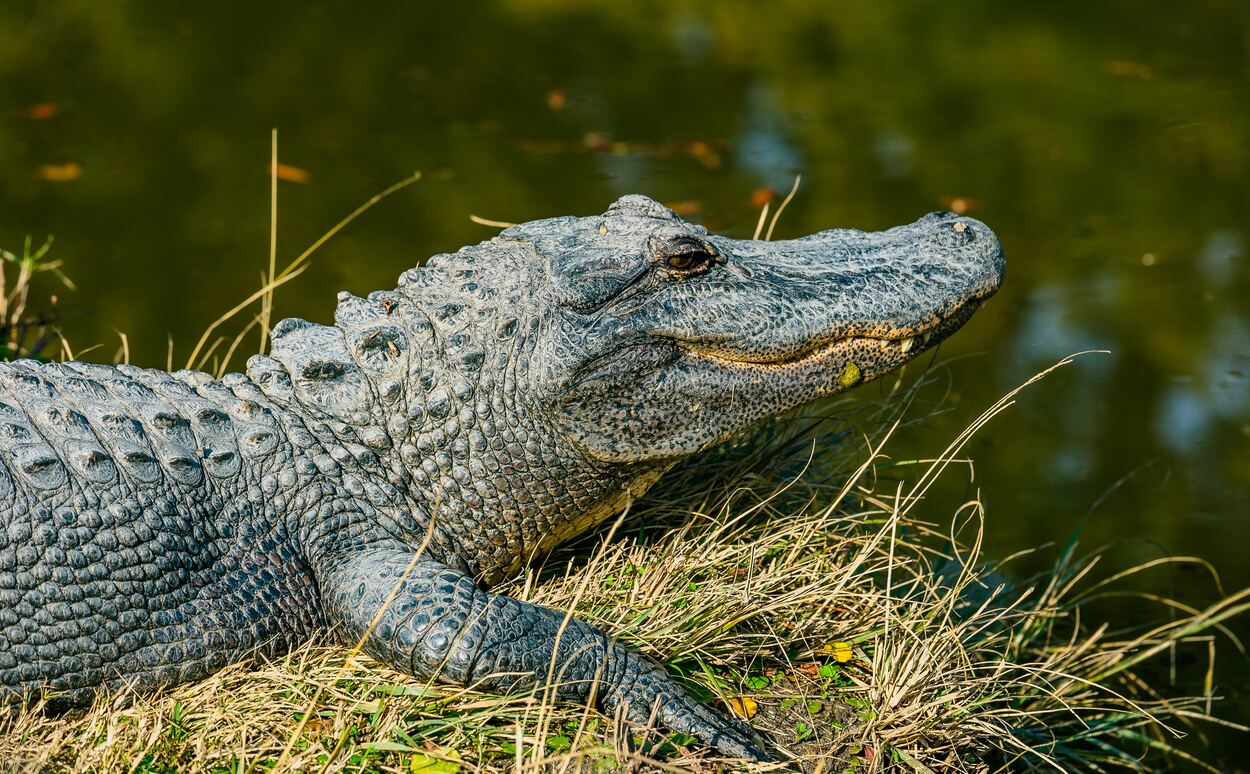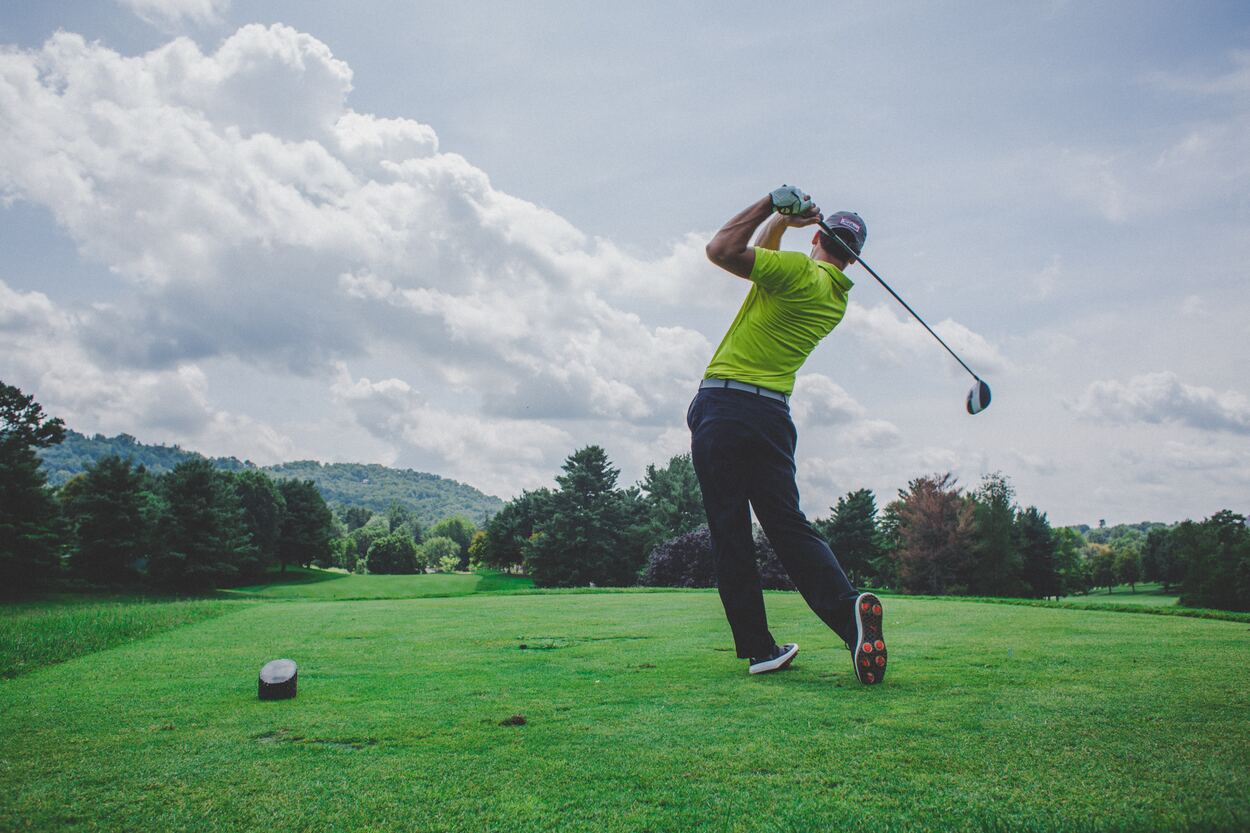How Many Golfers Die From Alligators? (Fewer and Odd than You Think)
Gator attacks are rare and far between, but silly me, I’m always worried about them, lol.
But unless you work near the water or are just unlucky, alligators rarely attack humans unless threatened in one way or another. So, how many golfers die from alligators?
Since 1970, no golfer has died from an alligator injury. However, around thirty fatal alligator attacks have been officially documented in the country. They either got attacked when trying to swim across the ponds illegally or walked their dogs near the water’s edge.
However, there have been documented non-lethal attacks, as you will learn in the next section.

Has there been an event that Golfers Die From Alligators?
Yes. There have been several cases making news headlines in the recent decade. Let’s see some of them.
Scott Lahodik
According to Men’s Journal, the man was attacked by an alligator in Florida’s Palms Course at Rotonda Golf and Country Club while getting a golf ball from the sixth hole.
Lahodik had been contracted to collect golf balls from the ponds when an alligator bit his left arm. Luckily, he fought bravely and managed to escape with significant injuries.
Surprisingly, Lahodik was no stranger to diving in golf courses since he was the then head of Golf Balls Internal and had been retrieving golf balls for three decades.
The reason behind the attack is still unclear because he was seasoned in his job, although some experts think he startled the reptile.
He was alone and drove safely in a utility cart before being airlifted to the hospital.
Tony Aarts
Aarts is the only golfer on this list who got attacked while playing golf in Magnolia Landing Golf & Country Club, North Fort Myers.
He was trying to make a putt inside the green when the 10-footer monster leaped from the hole’s right side, clamping on his right ankle.
The gator dragged him into waist-deep water, where he had to choose between drowning and surviving. He chose survival and fought for his life using a putter.
The animal let go after three blows, and Aarts crawled to safety.


of Callaway ERC Triple
Track Golf Balls for
yourself or your buddy!
Do Alligators Eat Golf Balls?
The answer to the above question is yes and no.
Yes, because alligators randomly swallow strange things found in their environments, like crustaceans, stones, and sometimes golf balls.
No, because golf balls are made of synthetic rubber and are nowhere close to an alligator’s diet.
It has been posited that golf balls occasionally make their way into alligators’ stomachs in rare instances. However, some gators slaughtered for meat have had strange items, like golf balls, in their guts.
Most of these scenarios often go undetected, making the data scarce.
The situation is more common for alligators living in ponds beside golf courses. Some golfers hit the ball into the bushes and ponds, polluting these areas.
Why Do Alligators Live in Golf Courses?
There are several reasons, including:

and apparel.
gear, accessories and apparel. (affiliate link)
Natural Habitat
Alligators live in golf courses to get unfortunate golfers for dinner. Just kidding! But the main reason is the presence of natural habitats in water ponds, marshes, and bushes. These make for a comfy, rent-free home since golfers are there to hit golf balls, not to disturb the ponds.
Food
With no known predators, alligators are very high on the food chain as predators. The huge ponds are sometimes home to fish and frogs, which make up for a good meal. Other small animals like rodents also call the marshes and bushes around ponds home, providing easy meals for these ancient predators. Luckily, golfers are not on the menu except in sporadic cases.
Favorable Environment
Alligators and other reptiles are cold-blooded, which means they depend on environmental conditions to warm or cool their bodies. The vast snakes prefer warm waters over freezing water because it is also favorable for their offspring.
It is also custom to have golf courses in warmer climates, making the game enjoyable. That’s how the alligators end up making some golf courses their home.
It’s Their Home
Rapid population increase has forced humans to colonize every green space and wetland.
Some of these areas have been home to different animal species for centuries before man decided to make a golf course.
Sometimes, it looks like humans are the invaders, bringing their golf courses into alligator homes.
What to Do if an Alligator Is Chasing You
What should you do if you were hitting a tee from the edge of the water pond and the reptile leaps from the water?
The answer is largely dependent on your situation. Most people don’t come across alligators too often, and golfers have infrequent contacts.
You can do the following when an alligator is chasing you:
Fight Back
This is the worst-case scenario where you cannot get away fast enough, or the alligator already has its jaws around your body part.
The next thing it does naturally is drown the prey; you don’t want that. Fight it with all you can before help arrives.
Use your golf club to hit the reptile in soft spots like the eyes as hard as possible. That’s how Tony Aarts survived.
If you don’t have a club, use any weapon in sight. Big sticks and rocks are good weapons to wage a counterattack.
Run Further to Dry Ground
Alligators are biologically adapted for speed and agility in the water, but these decrease on dry land. Your first instinct should be to keep away from anywhere near water. Run as fast as possible towards other golfers or barriers like short fences.
Running towards taller fences can be counterproductive because it will get you trapped. However, jumping over short fences is advantageous because the alligator cannot jump.
Deflect The Attacks
You must have seen alligator and crocodile farmers controlling them with a stick on television. You must do something while you’re no expert when the gator comes too close for comfort.
Use a stick or golf club to keep the snout away and deflect the attack. The best advice on what to do when an alligator is chasing you is to keep away from one.
If you want to know about odd events related to golf, check out my other article here: How Many Golfers Die From Lightning? (Be Careful)



